Schools
There are sections on education in the parish in the two 'Red books' in the General account section of the website:
The account below deals with:
The old Terrington Church of England School (to 1890)
There are references to a school in Terrington from at least 1705 when there was a school house built by the rector. Baines' Directory of 1823 names two school masters in Terrington, John Blanchard and John Harrison, and in 1833 there was a daily school in which about 33 boys and 33 girls were educated, chiefly at the expense of their parents with some help from the Earl of Carlisle.
This school was run as a National or Church school (i.e. according to the regulations of the ‘National Society for promoting the education of the poor in the principles of the established church' which had been founded in 1811) and would have enforced the teaching of the liturgy and catechism of the church of England.
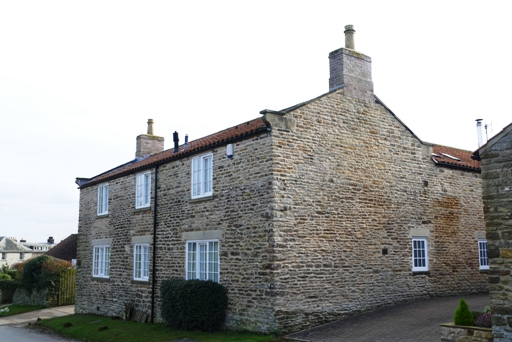
A new school was built in 1838 for 120 children on the site of the present Brindle Court in North Back Lane. White's Directory of 1840 states 'The schoolmaster has the interest of £21, left for the education of two poor children' and gives Robert Dobson as the schoolmaster.
Kelly's Directory of 1857 says that Terrington has a National school and that a Sunday school is held in the school-room. Robert Dobson is still the schoolmaster and Miss Ann Dixon is mistress. Robert Dobson is also listed as receiver at the Post Office.
Samuel Wimbush, as rector from 1865 to 1908, was responsible for the running of the school, doing the school accounts and for presiding over meetings of the school committee - which on numerous occasions were not quorate. And even buying coals for the school.
His diary mentions a number of times the search for and appointment of new teachers. On one occasion he gave notice to a teacher to give up the school, probably following a school inspector's report. On another occasion the school committee decided to keep all the pence (presumably the money collected from the children attending the school) instead of, as before, giving half to the schoolmaster. The teacher left soon afterwards. Another teacher apparently left after discussion about his salary. Others left to go to a bigger school.
In December 1871 Mr Ragnett the schoolmaster had smallpox. In April 1877 the school was closed by order of the sanitary authority because of a scarlet fever outbreak. Mrs Howard then threatened to stop her payment towards the running of the school, prompting a letter from Samuel pleading for the subsidy to continue. The school re-opened in June. Cases of scarlet fever were again reported in 1885, 1891 and 1901. In 1880 and 1902 the school was closed on account of measles.
The school was always closed in August and September for at least 4 weeks harvest holidays.
Some of the pupils went on to become teachers themselves. In December 1883, Samuel reports that Hannah Frances Goodwill did her 2nd year Diocesan Exam Papers at the rectory. She was the daughter of George Goodwill, cordwainer, and went on to be the infant school teacher and a formidable old lady. She never married. In August 1900 Samuel presented a desk to Alice Hawkins, subscribed for by the children, teachers and managers on her leaving the school for the Durham Training College.
The school was often used as a village hall for various events - concerts (which could include 'comic songs'), dances and balls, parties for the choir, drama and meetings, including Liberal party meetings at which Mr Howard (later the Earl of Carlisle) spoke. In 1886 it was used by the Primitive Methodists for a magic lantern entertainment, and in 1897 there was a Jubilee Festival meeting. Abstinence/teetotallers meetings were common.
Samuel sometimes refused to lend the school. On one accasion, Henry Blakey returned his Temperance Pledge because Samuel was unwilling to lend the school for a dance. On another occasion Samuel agreed to a social evening in aid of the Wesleyan chapel trust, but they then declined it.
Music was on the curriculum at the school: in January 1882, the schoolmaster, Mr. Bell, 'bought a Harmonium for the school for £7, leaving 14/- unpaid'.
The school was financed partly by a school rate levied on ratepayers in the village and partly by daily payments by the children, in addition to support from Castle Howard and money raised by concerts and other events. Collecting the rate was not always straighforward. In October 1883 John Swann refused to pay. (The Swanns, as Methodists and Liberals, sometimes opposed Samuel, eg in wanting a non-denominational school, sometimes gave him support, eg in not wanting to allow card playing in the Reading Room.) In 1886 the school fees were set at 2d to standard 3 and 3d from Standard 4 to 7, with a 1d refund on the 3rd child. [1d = 1 old penny = 0.4p]
From 1882 Mrs Howard (the Countess of Carlisle from 1889) became involved in school affairs. In February 1882 she offered to become a manager of the school and gave her support to the institution of “The Band of Hope” [a temperance organisation for working-class children, founded in Leeds in 1847, whose members took a pledge of total abstinence and were taught the evils of drink] in Terrington and Miss Howard asked Samuel to take the school children to Castle Howard to hear a lecture about temperance and total abstinence. In July 1885 Mrs Howard accepted the post of manager of the school.
In 1889 the average attendance at the school was 68, though there appeared to be about 105 on the books. Mr Shackleton Hodgson was master and Miss Hannah Frances Goodwill, assistant mistress.
The Battle of the Schools (1888-1890)
In February 1874 Terrington Church of England school was inspected for the first time. Inspections then became a frequent occurrence, not always to rector Samuel Wimbush's liking. In May 1888 Samuel commented: 'Received school report. Bad.' This may have been the report which condemned the school and led to the need for a replacement. Following the condemnation, a long and heated discussion took place over whether the new school should be a Church of England or a non-denominational school. The Worsleys, a branch whom owned Cliff Hall, were closely involved in discussions about the new school, supporting the building of a Church of England school. The Howards of Castle Howard, who owned and had supported the old school which had been condemned, wanted a non-denominational school and refused to build a new Church of England school even with a significant Worsley financial contribution.
In December 1888 at a special school meeting Mrs Howard proposed, and it was carried, that the school should be non-denominational, at which Samuel Wimbush resolved to resign his post. Within a short time he had obtained a statement in favour of a Church school, signed by the movers and shakers Mr Kinnear at Terrington Hall and Mr William Worsley at Cliff Hall. The battle then hotted up and in March 1889 Samuel received a letter from Mr Howard to say that he would withdraw his subscription from the school on account of alleged statements of Samuel.
In June 1889 Mr Kinnear composed a letter to the ratepayers asking for the voluntary rate for the school and in August Samuel made out a balance sheet of school income and expenditure with Mr Kinnear, taking averages of the last ten years, presumably to support the continuation of the school as a C. of E. school. In October 1889 Mrs Worsley made a promise to make good any deficiency in the school income the following year.
In 1875 the Worsleys had bought the site of the Bull pub and now donated the site for building the new C. of E. school. The Worsleys were involved in producing plans and in April 1890 Dean Pury Cust laid the foundation stone for the new school. It opened later the same year with a capacity of 120 children as a Church of England school. Mr Kinnear and Mr William Worsley helped Samuel go through some 100 or so letters of application for the post of schoolmaster. The Worsleys continued to support the new school financially and held concerts to raise funds.
In May 1890 the Carlisles of Castle Howard attempted to take possession of the old school but Mr Kinnear refused to give up the keys as they had received no notice to quit. They eventually agreed, after legal action and some dragging of heels, to give up the old school on 1 October. On 24th September 1890 Lady Carlisle had issued circulars in the village announcing that she would open a British School in Terrington on the 2nd of October, with free education and on 26 September Samuel issued a notice that free education would be given in the new church school, which opened on 29 September.
The new Terrington Church of England School (from 1890)
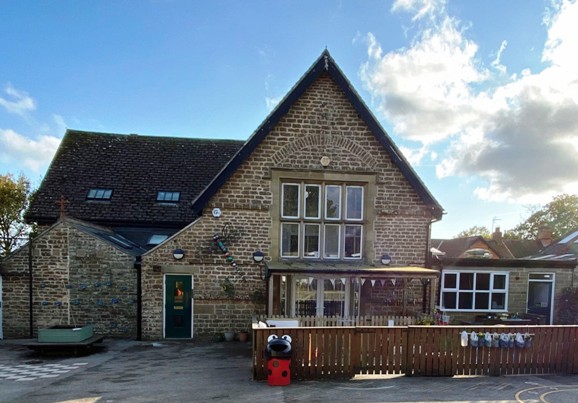
Things clearly improved with the opening of the new school. In April 1891 HM Inspector’s Report on the School was good and in April 1893 'very good, very good grant'.
In 1893 the average attendance at the C. of E. school was down to 47 as a result of Lady Carlisle's rival school but, after Lady Carlisle's rival school closed in August 1894, on re-opening after the harvest holidays the Church of England school admitted 20 additional scholars and expected many more.
The modern world intruded in December 1904 when 'Simpson asked for the school for his phonograph' and in March 1905 Samuel Wimbush writes in his diaries 'A cinematograph exhibition is being given in the school tonight. We did not go.'
Thomas Kirkbride was master from 1905 to 1925 (and also Clerk to the Burial Board) and Miss Hannah Frances Goodwill assistant mistress until at least 1909.
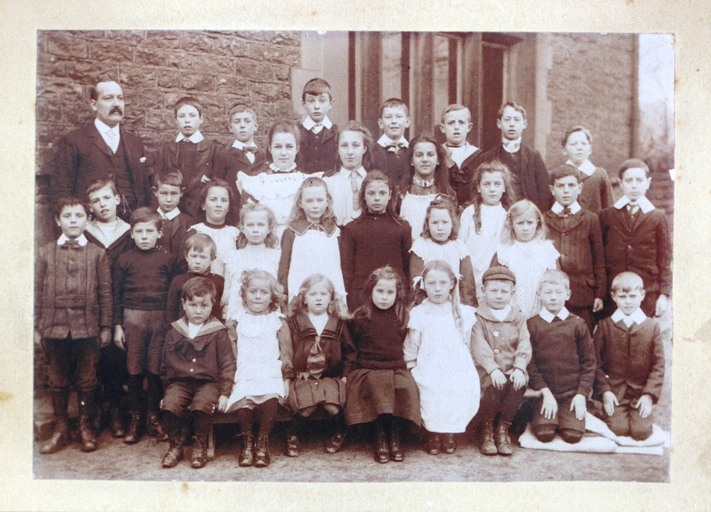
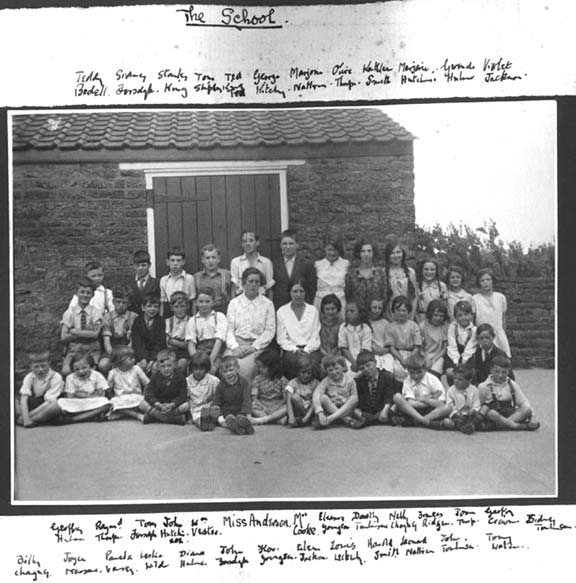
Terrington British School (1890-1894)
Lady Carlisle, who had opposed the building of a new Church school in 1890, re-opened the old school, which the Carlisles owned and had long supported, as a British school (i.e. according to the tenets of the ‘British and Foreign School Society for the Education of the Labouring and Manufacturing Classes of Society of Every Religious Persuasion' which enforced bible-reading but excluded denominational teaching), referred to by Samuel Wimbush as a 'School for Dissenters’, for 80 children. Presumably the school building, which had been condemned as unsuitable for a school, was modernised at this time. So, for a time, Terrington was served by two schools.
In 1893 there were about 52 children attending the school, with Mr. Baker, master and Miss Newton, mistress. It closed down in August 1894.
The old school continued to be used for various purposes. In September 1896 Samuel reported a small congregation at the church, partly owing to a ‘service in song’ in the old school room, held by the Primitive Methodists, indicating that some parishioners frequented both church and chapel. Samuel also mentions a teetotal meeting and a meeting to read a paper about Parish Councils: parish councils took on some of the functions which had previouly been the province of the church. In November 1901 Samuel asked Castle Howard for use of the old school for cookery classes, but the result is not mentioned.
In 1924 the former school building was sold to the Parish Council by the Hon. G. W. A. Howard for a village hall and reading room, and was opened as such in 1926. In 1954 Cliff Hall became the village hall and the old school was used for a time as the canteen for the Church of England school and was later sold to Terrington Hall Preparatory school which used it, it is said, to store pupils' trunks.
Terrington Hall School
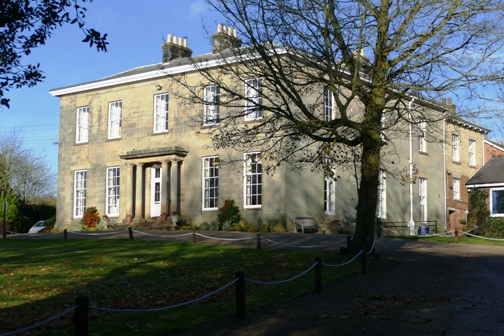
In 1921, Captain John Lewis Thomas brought his preparatory school for boys from Filey to Terrington Hall, renting the building from G Leonard Thompson, and this was the beginning of Terrington Hall Preparatory School.
In 1925 Capt. Thomas is still at the Hall but by 1929 it is the residence of Henry Bucknell but still the property of G. Leonard Thompson esq. In 1933, Kelly's Directory gives 'Bucknall Harold, Terrington hall'.
In Kelly's Directory of 1937 we read: TERRINGTON HALL PREPARATORY SCHOOL FOR BOYS (T.B. Littlewood M.A., I.A.P.S. head teacher), three hundred feet above sea level; ideal situation; splendid health record; open-air life; abundance of the best food; certified Grade "A" T.T. milk; residents only.
Peter Clementson became headmaster 1938. He bought The Hollies to lodge teachers and Brindle Court (the old village school building) which was at one time used for storage. In 1952 he bought Cliff Hall, sold it to the Village Hall Committee in 1954, and gave the bowling green to the Cliff Bowling Club. Clementson's monument in Terrington church reads 'PETER GEORGE ALFRED CLEMENTSON 21 June 1912 – 30 December 1981 Headmaster Terrington Hall Preparatory School 1938 – 1977 My son forget not my law. Proverbs 3.1'.
Several extensions to the building have been made and in 1964 the school accommodated 95 pupils.
In 2016, the school received a visit by a descendant of rector Charles Hall who built the Hall.
Ganthorpe School
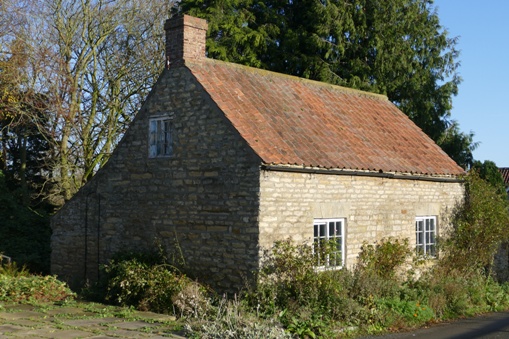
Baines' Directory of 1823 lists schoolmaster Richard Spruce (the father of Richard Spruce the botanist and explorer), in Ganthorpe. White's Directory of 1840 says that the Earl of Carlisle 'allows the schoolmaster, (Richd. Spruce) £21 a year, for teaching 20 free scholars'.
In 1857 there is still 'a small school' in Ganthorpe, supported by the Earl of Carlisle, but this school may have closed for a period, as by 1859 Ganthorpe children were attending Terrington school.
It, or another school, had reappeared by 1871 when it was described as a private school attended by 20 children. It is last heard of in 1879 when it was described as a Dame school supported by the Earl Of Carlisle. Mrs. Holden was mistress during the 1870s.
